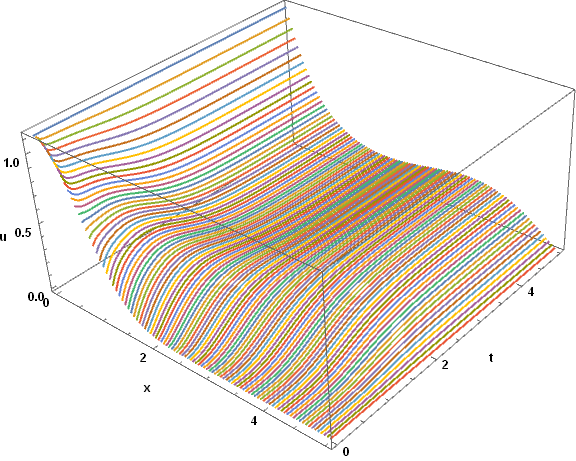NDSolve is not capable of solving this sort of problem as a PDE. Thus, it is necessary to perform the computation by discretizing the PDE in x. This procedure is discussed in Introduction to Method of Lines. A while ago, I solved a somewhat similar problem, 78493, that involved an integral over u in one of the boundary conditions. Here, the integral of x u enters into the PDE itself. The code nonetheless resembles that in the earlier problem.
xmax = 5; tmax = 5;
n = 100; h = xmax/n;
U[t_] = Table[u[i][t], {i, 0, n}];
xtab = Table[i h, {i, 0, n}];
creates the list of dependent variables and their corresponding positions in x. Then,
usum = Sum[xtab[[i]] u[i][t], {i, 1, n}] h;
stab = Join[{0}, Table[(xtab[[i]] - usum) u[i][t], {i, 2, n}], {0}];
generates the result of the discretized integral of x u and constructs the source term. (x - NIntegrate[x u[x, t], {x, 0, xmax}]) u[x, t]. (Observe that the source term is not applied to the boundary equations.) Next,
eqns = Thread[D[U[t], t] - stab == Join[{0}, ListCorrelate[{1, -2, 1}/h^2, U[t]], {0}]];
initc = Thread[U[0] == Table[2/(Sqrt[Pi]*Exp[xtab[[i]]^2]), {i, 1, n + 1}]];
lines = NDSolveValue[{eqns, initc}, U[t], {t, 0, tmax}] // Flatten;
constructs the coupled ODEs that represent the PDE, the initial conditions, and solves them numerically. The result is,
ParametricPlot3D[Evaluate@Thread[{xtab, t, lines}], {t, 0, tmax},
PlotRange -> All, AxesLabel -> {"x", "t", "u"}, BoxRatios -> {2, 2, 1},
ImageSize -> Large, LabelStyle -> {Black, Bold, Medium}]

